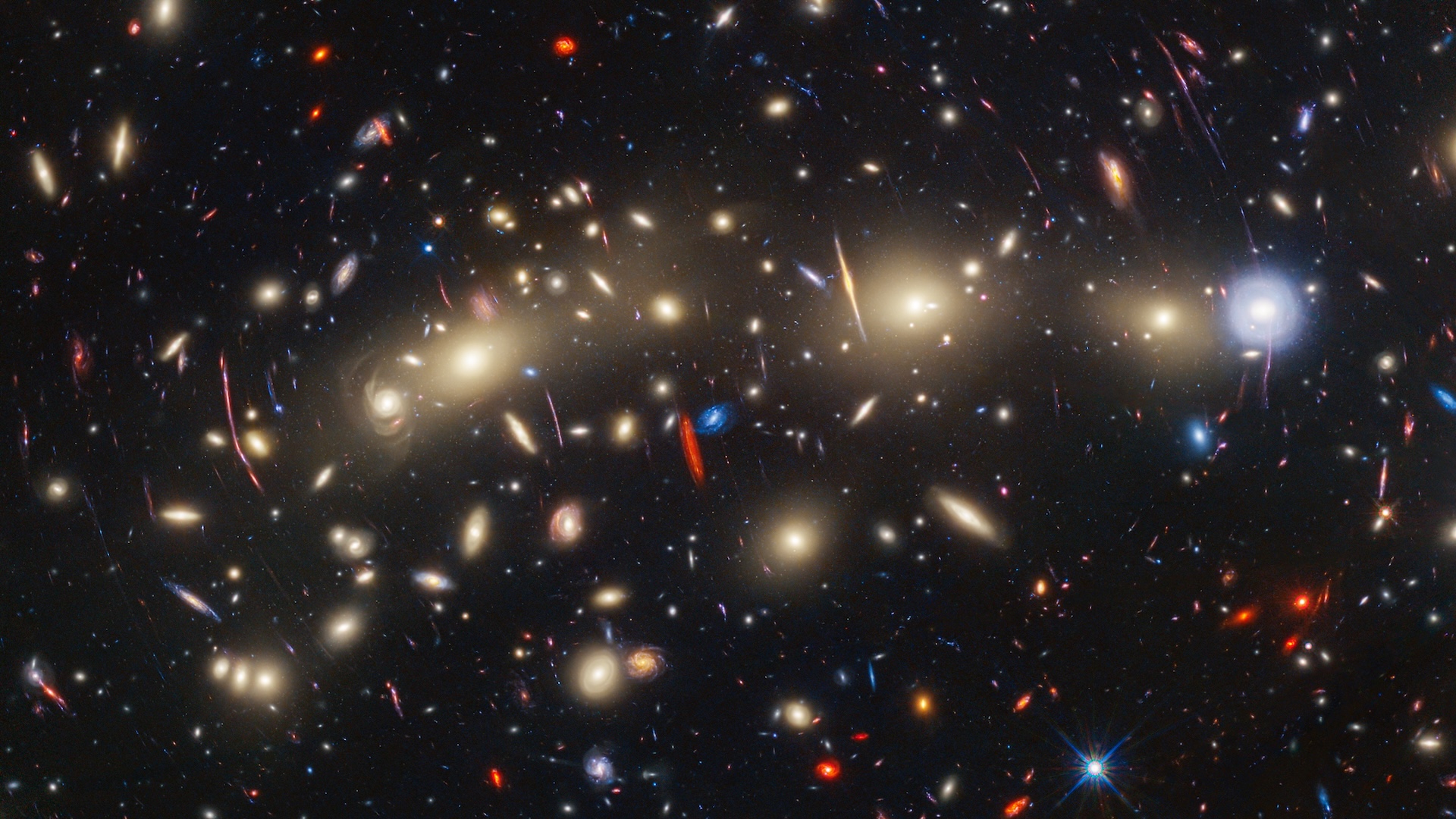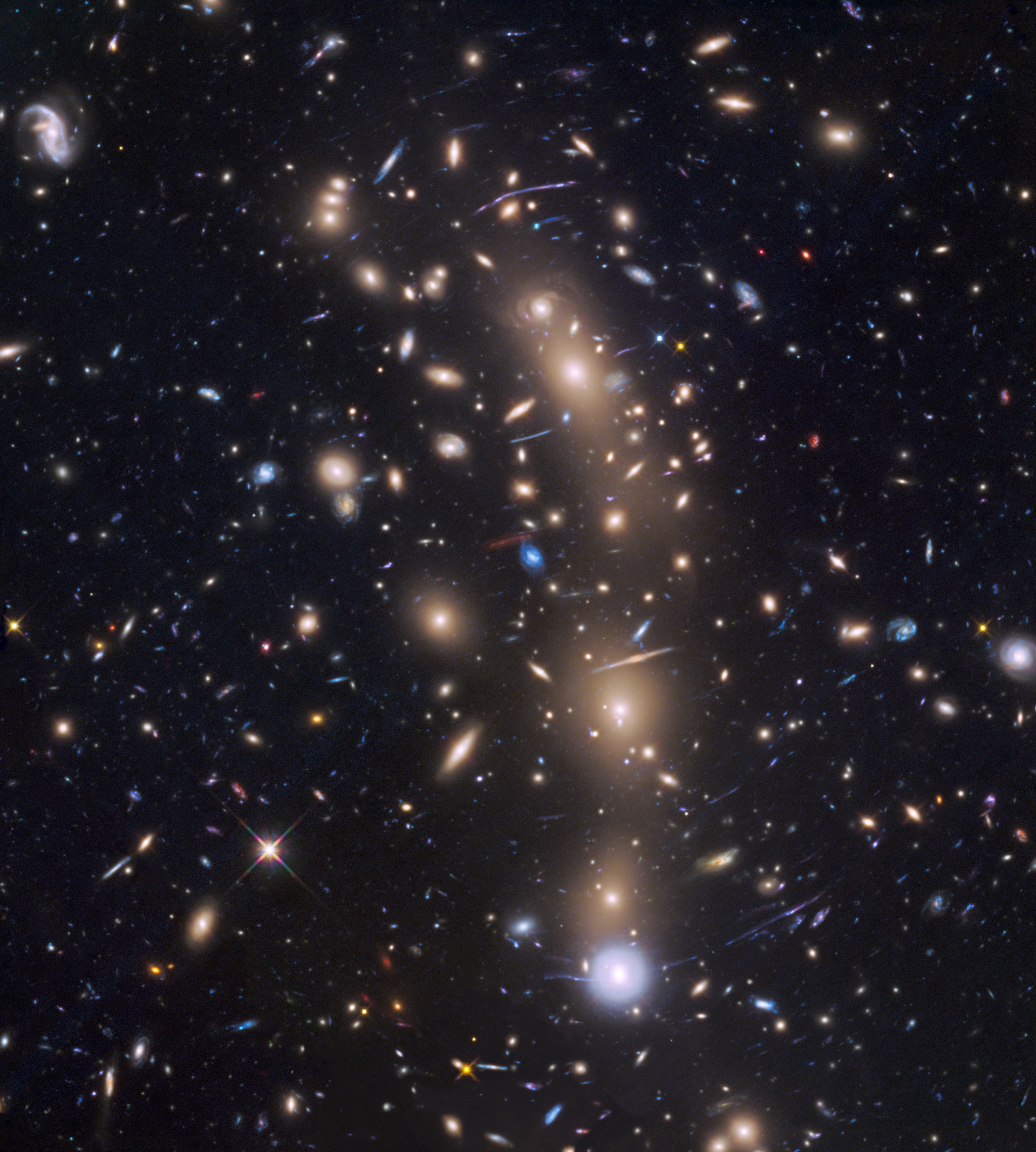James Webb telescope may have found the universe's first generation of stars
The James Webb Space Telescope may have discovered Population III stars, the universe's first generation of stars. They may tell us more about how galaxies form.

Astronomers using the James Webb telescope may have discovered some of the universe's first stars, and they may offer clues to how galaxies form. Using the James Webb Space Telescope (JWST) and a phenomenon first predicted by Albert Einstein, the scientists spotted the early stars, known as Population III stars, in a distant cluster called LAP1-B, located 13 billion light-years from Earth. They described their results Oct. 27 in The Astrophysical Journal Letters.
Population III stars, sometimes called dark stars, are theorized to be some of the first stars that formed after the Big Bang about 13.8 billion years ago. According to this theory, hydrogen and helium combined with dark matter, creating gargantuan stars a million times the mass of the sun and a billion times as bright as our star.
There are several reasons the team suspects the stars spotted by JWST are Population III, lead study author Eli Visbal, an associate professor and astrophysicist at the University of Toledo in Ohio, told Live Science in an email.
For example, the stars' spectra, which show their composition based on the light they absorb and emit, had emission lines suggesting lots of high-energy photons, which is consistent with Population III predictions. The spectra also suggested the stars are very large — each on the order of 100 solar masses — and the mass of the stars met some theoretical calculations.
"If indeed Pop III, this is the first detection of these primordial stars," Visbal told Live Science.
However, JWST was suspected to have seen Population III stars before, the team noted in the study. For example, peer-reviewed research in March 2024 suggested that the telescope had spotted some in the galaxy GN-z11 that formed only 430 million years after the universe itself.
The new study argues, however, that the detection of LAP1-B is the only one that fits three theoretical conditions for Population III stars: It formed in a low-metallicity (hydrogen and helium) environment with a temperature suitable to host star formation; the stars formed in low-mass clusters with only a few very large stars present; and the cluster meets mathematical conditions for the initial mass function, or how star masses were distributed among a population when they formed.
Get the world’s most fascinating discoveries delivered straight to your inbox.

JWST was essential for the observations because its 6.5-meter (21 feet) mirror allows it to catch faint objects at incredible distances, Visbal said. But what helped LAP1-B pop into view was a phenomenon called gravitational lensing, which happens when a very massive object, such as a galaxy, bends space-time around it while a background object is in just the right spot. As light from the distant background object passes through the "warp" created by the foreground object, the background light is distorted into rings or arcs. This phenomenon is sometimes called an Einstein ring, as it confirms what Einstein suggested would happen more than a century ago.
In this case, LAP1-B became visible when a closer galaxy cluster, called MACS J0416, passed in front of it and "lensed” the light of LAP1-B.
JWST also allowed for observations of the emission lines from the stars, which were initially emitted in ultraviolet wavelengths but then stretched into infrared wavelengths due to the expansion of the universe, Visbal said. JWST is optimized for infrared observations, allowing the stars to be visible.
Aside from the novelty of the star finding, LAP1-B helps showcase how galaxies evolved, Visbal said. Because Population III stars are expected to form in small dark matter structures that also were building blocks for larger galaxies, "they teach us about the earliest stages of galaxy formation and evolution — for example, how metals pollute the initially pristine hydrogen and helium gas."

Elizabeth Howell was staff reporter at Space.com between 2022 and 2024 and a regular contributor to Live Science and Space.com between 2012 and 2022. Elizabeth's reporting includes multiple exclusives with the White House, speaking several times with the International Space Station, witnessing five human spaceflight launches on two continents, flying parabolic, working inside a spacesuit, and participating in a simulated Mars mission. Her latest book, "Why Am I Taller?" (ECW Press, 2022) is co-written with astronaut Dave Williams.
You must confirm your public display name before commenting
Please logout and then login again, you will then be prompted to enter your display name.
